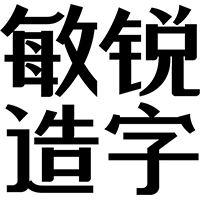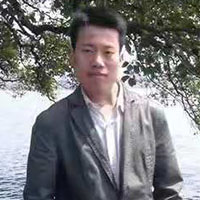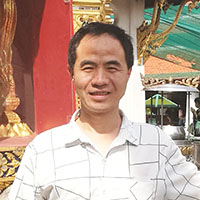Nomade, A Man of Letters Looking Out Over The Mediterranean

I'm back from our family vacation since Monday night. Of course, with my "condition" I never really am on vacation. Several typographic and type-related things caught my eye in the two weeks we spent at the Côte d'Azur (or French Riviera if you prefer), sparking ideas for possible topics on The FontFeed. Without a doubt the most impressive thing we saw was on a trip to the neighbouring town of Antibes. Port Vauban in Antibes is the largest yachting harbour in Europe with over 2000 moorings and capable of accommodating yachts and boats in excess of 100m length. This natural port has been used since before Roman times, and is now the Mecca of luxury boats and yachts, and a local fishing fleet. It is well known for its billionaires' pier. As we climbed the elevated walkway on the wall of the Saint-Jaume bastion, a mirage-like sculpture emerged at the far edge of the rampart. A squatting giant seemingly made of lace shimmered bright white against the steel blue sky. On getting closer the structure revealed itself to be entirely made of letters which – apart from the Q – look a lot like Folio. Like a gigantic figurehead in the port of Antibes, Nomade is a permanent invitation to explore space and the space within the sculpture itself.
Nomade © CM AUGER
The sculpture is a creation by contemporary Catalan artist Jaume Plensa, who lives and works in Barcelona and Paris. Born in 1955, Plensa studied art in his city of origin Barcelona, in the Escola Llotja and in the Escola Superior de Belles Arts de Sant Jordi. He currently is one of the most important sculptors on the contemporary art scene. Plensa made his name in the 1980s with simple, large forms made from cast iron. His work then evolved into sculptural installations using light, sound and language.
In parallel to his work as a sculptor, since his early years Plensa has developed an important body of work on paper which is less well known. His drawings, sometimes on a very large scale, using highly varied techniques, draws on the formal repertoire of an artist who, for the past ten years has concentrated on the human figure expressed mainly through its bodily envelope and singularity of faces. He often uses type in both sculptures and drawings. Plensa is also active in opera and theatre projects – most recently, he designed the sets and costumes for the Paris National Opera's 2005 production of Mozart's Die Zauberflote.
DécouvrezJaume Plensa trône sur les remparts d'Antibessur Culturebox !
In the video above, taken from France 3, Jaume Plensa explains the origins of Nomade and the context of his work. Here's a translation.
It's an open piece, inviting people to enter it, like a grand-mother embracing her children.
Letters, like living cells composing a giant body. This one is 8 metres high and weighs 6 tons of steel. Could its creator be a biologist of words?
I always imagined that our skin is permanently tattooed with text – our life, our experiences – tattooed, but with invisible ink. And then suddenly, somebody is able to decipher these tattoos; that person becoming a lover, a friend. That is probably why I work with sculptures like this, this human form composed solely of letters, like cells. It's almost biological.
These letters, he solders them, but he also pastes them on paper, on bodies or anonymous faces, on erotic magazines found in the streets of Japan – whatever, as long as they communicate.
People believe that a letter is nothing, that it is anonymous, but in relationship with other letters they form words, the words with other words create texts, the texts with other texts create culture, and so on.
Words to share ideas. In a series of canvasses the Catalan sculptor has integrated the Universal Declaration of Human Rights, word for word.
People always think that the Universal Declaration is something meant for politicians, for abiding laws in countries, and similar things. But I believe that they rather apply on an intimate level; what do we do?
Jaume Plensa can also interiorise words. Since three years, in Nice, his "Thinkers" meditate in silence on their steel poles. From now on their nomad brother in Antibes has also found his pied-à-terre.
View from inside the sculpture. What is he thinking of? © CM AUGER
View from below. © CM AUGER
The sculpture originally appeared in Antibes in the summer of 2007. During the closing of the Musée Picasso from March 2006 to July 2008, the deputy mayor of Antibes requested an outdoor project from curator Jean-Louis Andral. One of his leads was Plensa, as Andral was familiar with his monumental work in several metropolises throughout the world. The artist was charmed, and in a stroke of luck he had a sculpture in production for the Art Basel fair in Miami.
It was an instantaneous and almost magical alchemy that occurred between the Nomade and the newly restored Saint-Jaume bastion. A meeting between a place and a work of art, celebrated by thousands of visitors seduced by the presence of this monumental statue, sitting on the city ramparts, its imaginary gaze locked into the vastness of the Mediterranean Sea. However, when the sculpture left for Miami, to be acquired by an art collector and subsequently integrated in a museum in Iowa, this left an emptiness on the Saint-Jaume ramparts. This all too brief encounter couldn't stay without continuation. The city of Antibes Juan-les-Pins ordered a similar sculpture, and Jaume Plensa returned to Port Vauban, this time to anchor his lettered giant definitively. It was inaugurated on Saturday May 15 2010, in the presence of Frédéric Mitterand, Minister of Culture and Communication.
In conjunction with the installation and a visit by the artist, the exhibition Jaume Plensa – L'âme des mots 1998-2009 is being staged at the Musée Picasso from May 8 to October 17. Like all sculptors, Plensa also has an important œuvre on paper. L'âme des Mots sheds a new light on the artist, revealing 91 drawings made between 1998 and 2009. Those are not preparatory sketches for sculptures, but works in their own right. Plensa, who evolved towards installations based on light, sound, and language, practices et asserts drawing with a specific body of work. He often proceeds with mixed techniques, mixing pencil, photography, etc., creating depth effects, using unusual materials like waxing or spray painting. Some of his very spectacular drawings measure 2 metres high and 6 metres wide.
Saint-Jaume bastion, final destination of the nomad. © CM AUGER
Observation, concentration, contemplation! © CM AUGER
Night view. © CM AUGER
Night view. © CM AUGER

































 闽公网安备35010202000240号
闽公网安备35010202000240号